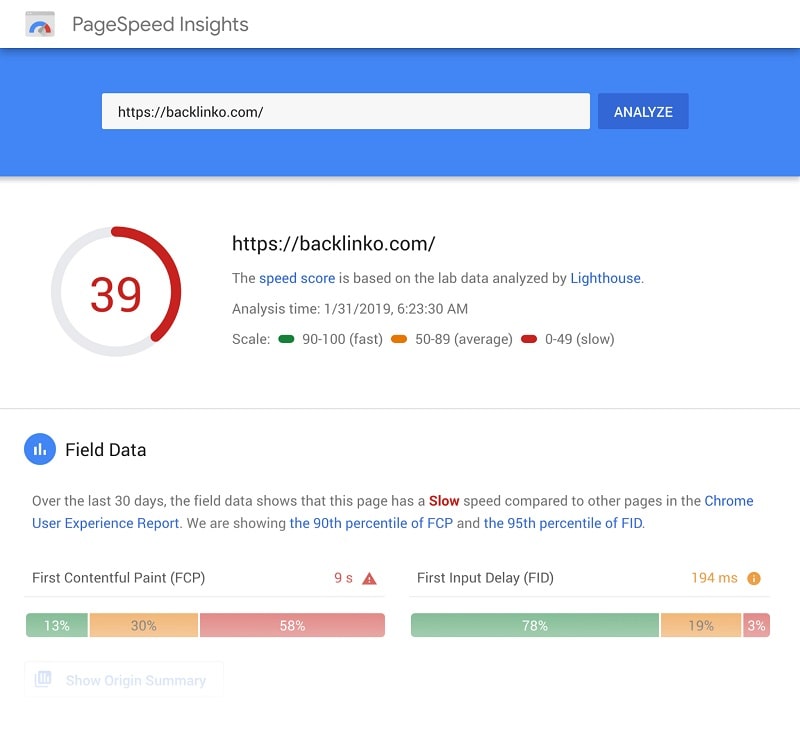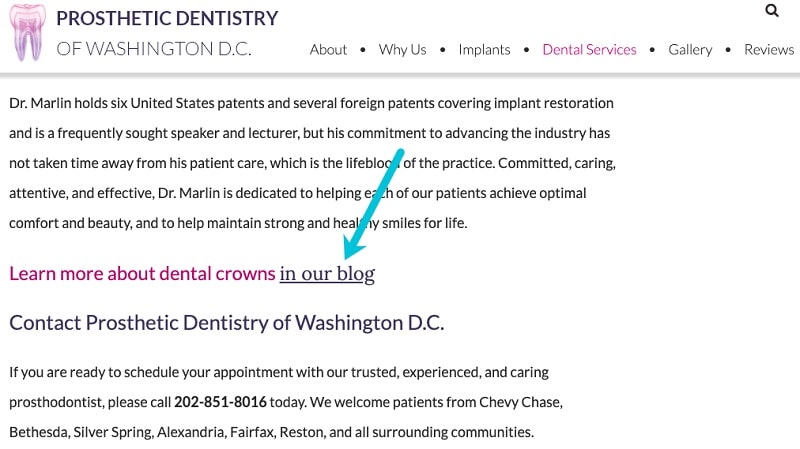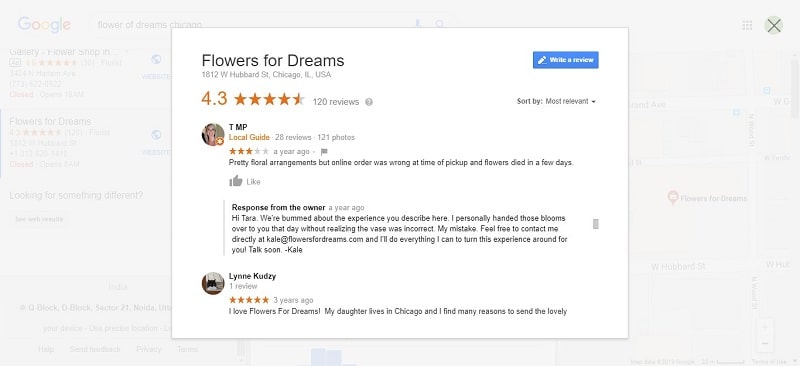As a business owner, you’re well aware of how important it is to choose the right marketing strategy. SEO happens to be the one that the majority of companies with a digital presence try to put to good use. This isn’t surprising — 80% of big purchases begin with simple research done online. That is, the more online exposure you have, the higher is the likelihood of your leads converting.
When leveraged well, Search Engine Optimization can be a real game-changer. It can help you drive organic traffic and boost sales without having to invest thousands of dollars into digital campaigns.
But this isn’t the only reason why integrating SEO into your marketing plan is a good idea. Besides improving your site’s search engine ranking, it can set you apart as a brand that prioritizes customer experience. The more you listen to what your customers want, the more likely you are to attract the right customer.
What’s the link between SEO and Customer Experience (CX)?
Speaking about the right customer, to find one — or rather a few dozens — you need to appeal to a search engine. Both Google and Bing tend to rank websites higher if it’s not just the quality of the content that meets their criteria. Those search engine crawlers pay attention to how optimized the website is and whether the User Experience (UX) is on par with the content.
You can’t count on a search engine to give you good exposure if you don’t adjust your website to deliver a good customer experience. Here’s where SEO tactics come in handy.
From using the most-searched keywords to allowing your customers to view your website from their smartphones, there are plenty of strategies you can adopt to appeal to a wider audience. Keep on reading to find out what they are.
1. Optimize Your Site’s Speed And Make It Mobile-Friendly
Did you know that the speed at which your website pages load directly affects their bounce rate? The faster your website is, the higher are the chances that the visitors will stay browsing it for longer. And if they stick around, they might even sign up for your newsletter or make the purchase. What’s more, search engines don’t rank high the websites that take a long time to load.
What you should do is optimize your website’s speed by compressing images, caching web pages, and minifying codes like JavaScript and CSS.

Google also takes into consideration how mobile-friendly your website is. With 60% of all online searches%20reaching%2072%20percent.), it makes sense why search engines focus on providing a seamless customer experience for mobile users too.
2. Discover The Intent Behind Your Customers’ Search Queries And Use Only Relevant Keywords In Your Content
Drowning your content in keywords that rank high isn’t the goal anymore. Not only does it look unauthentic, but it also tells the search engine that your website is spammy. Dig deeper and figure out why your customers are using certain keywords in their search queries.

When you understand the intent behind those keywords, it’ll be easier for you to alter your content accordingly. If you’re a business running a detox juice company and your customers use the keyword ‘juice cleanse for skin,’ you might want to create posts around it. Scribble down articles on long-term health benefits associated with juice and how to turn it into a daily routine.
Use some of the most popular research tools to find keywords: Ahrefs Keyword Explorer, SEMrush, Keyword Tool, Majestic, KWFinder, and GrowthBar. These and other SEO tools will make your life a lot easier.
3. Post Content That Educates And Entertains
Apart from using relevant keywords in your content, you should also pay attention to the type of content you post.
Does it describe your product or service in detail and offer extra value by explaining why your customers would benefit from it? Is it written in an engaging way that guarantees that the customer isn’t going to skip the majority of it? Does it answer all the questions the prospect might have to cut the risk of him leaving your website and having to look for answers elsewhere?

A search engine like Google is smart enough to weed out websites falsely claiming that they’re experts in the field. It adopts an algorithm that tells it whether your website content corresponds with your niche. To prove that you’re an authoritative source, update your content from time to time to meet the new customer demands.
4. Add As Many Internal Links As Organically Possible
Search engine spiders thrive off of being able to crawl websites that take internal linking seriously. It makes it easier for them to establish what content every web page contains while also indexing new and existing pages. This on-page SEO tactic can be an easy fix for websites that aren’t ranking well and thus are losing customers they can’t afford to lose.

To make the most of internal linking, go through all the blog posts you have and add links to similar content that the customers are likely to click on. It relates to the topic of the article so that your website visitors can fill up their knowledge tank with no extra search. This appeals to prospects looking to learn more about your business as much as to search engines checking your internal linking structure.
5. Dabble Into Local SEO So That Your Customers Can Find You
Including your contact details on your website should be standard practice. It helps your customers reach you when they have a question or two to ask before making the purchase. But many business owners overlook the importance of having this information accessible to website visitors and underestimate the power of local SEO.

Also known as NAP, Name, Address, and Phone Number are essential pieces of information that act as guiding tools for your prospects. Designed to help you rank high on Google Maps, they increase the likelihood of others finding your business and engaging with it as opposed to your competitor. The result — boosted sales, happy customers, and satisfying search engines.
6. Create A Helpful FAQ Page With Multiple Resources
Once you’ve identified what your customers are searching for, it’s time to build a resourceful FAQ page that’s easy to navigate. Gather the most burning queries and answer them in a way that leaves no more questions. Use relevant keywords in your answers so that more people can use your knowledge base and convert after finding what they were looking for.

You can combine the most searched questions in your niche with features applicable to your product or service when shaping your FAQ page. If appropriate, you can also add links to other web pages on your website, thus ensuring that the customer is all covered.
7. Boost Your Social Media Presence
Today, as many as 54% of customers use social media to search for products or services they’re interested in. This number will only go up as more businesses start working on their social media presence and using it to attract customers.
The reason behind the popularity of Instagram, Facebook, and Twitter, among other platforms, is simple. They make it easy to connect with customers on a personal level. It feels less like negotiating with a business and more like talking to a friend. This way, you can quickly fix any issues your customers might have by promptly replying to their messages.
When throwing SEO into the mix, you increase the odds of acquiring new customers. This can look like adding a geographical location to your post, a few relevant hashtags, and contact details. You can also mention your website and add a Call-to-Action button to your bio as Anna Barnett did on her Instagram profile down below.

8. Increase Your Brand Recognition By Getting More Positive Reviews
In the current competitive business arena, online reviews act as personal recommendations. 88% of customers confessed that they give online reviews a consideration when deciding on doing business with the company. When you factor in many places those reviews get posted – Google, website testimonials section, social media – it makes sense to encourage them as much as possible.

Search engines will reward your company for having positive reviews by moving you higher on the search results list too. In turn, this will prompt even more people to check your business out and leave more reviews if satisfied with the purchase or service offered. It becomes a mutually beneficial circle that keeps on giving the more effort you put into providing an excellent customer experience.
Related Content
- 5 Advanced SEO Tips to Boost Your Organic Traffic in 2022
- 7 Ways to Use Data Analytics to Improve Your SEO Ranking
- 11 Best Ecommerce SEO Tools Marketers Need to Start Using
- 7 Tips to Improve Your SEO Today
- 5 Tips to Increase Blog SEO
Make search engines happy and so will become your customers
It’s not rocket science. To gain returning clients, you must deliver a memorable customer experience. This means brainstorming about different marketing strategies you can put in place, including Search Engine Optimization. It’s optimizing your site’s speed and making it mobile-friendly, using relevant keywords in your content, making the said content engaging, and adding as many organic links as possible.
It also includes making use of local SEO, having a FAQ section with useful information, dabbling into social media, and encouraging customers to leave reviews.
Sure, Google’s algorithm can be tricky to understand. If you stick to offering your customers the content that’s easy to digest, navigate, and use to make purchasing decisions, you’ll be able to reap the benefits of word of mouth in no time.

Written by our guest writer Mikkel Andreassen, Customer Experience Manager at Dixa
Mikkel is passionate about customer experience in every color of the beautiful customer engagement spectrum. He loves building great connections with his customers, which often lead to meaningful friendships that last a lifetime and inspire his work. Driven by the genuine belief that CX is the pivotal force that drives a successful business, he is currently at the helm of Dixa’s customer experience strategy.

